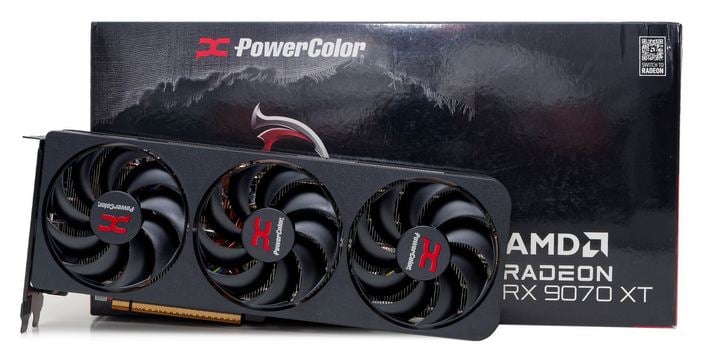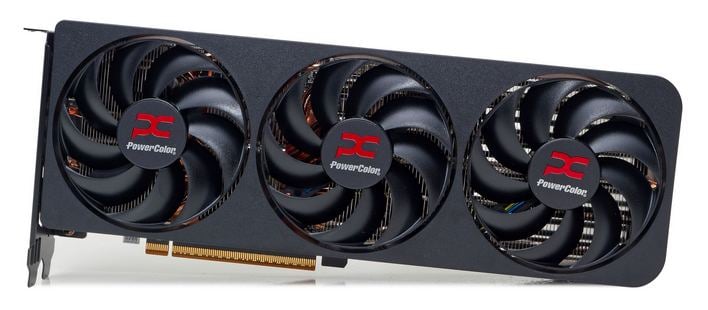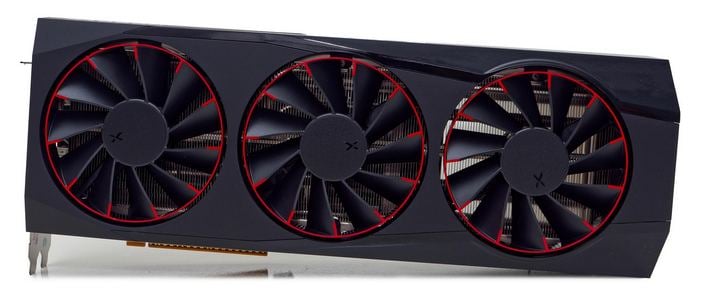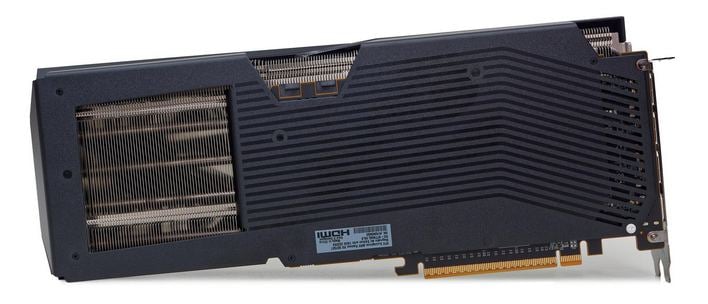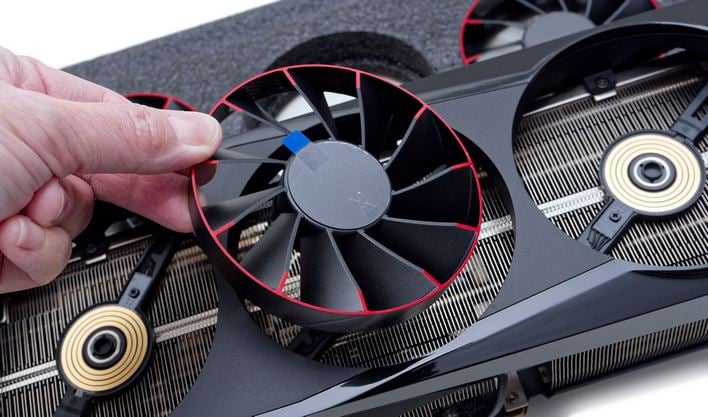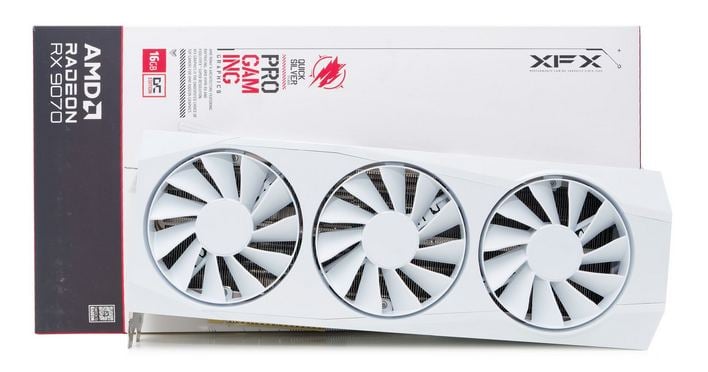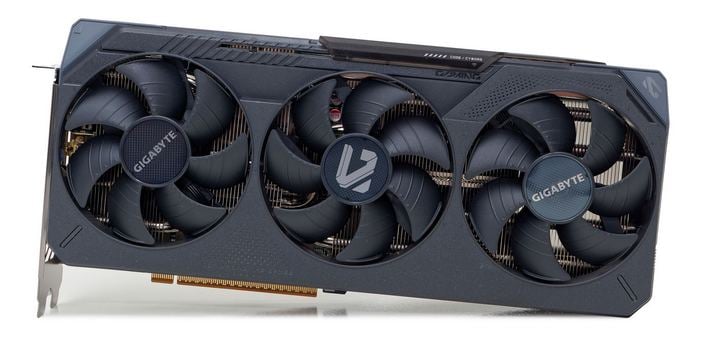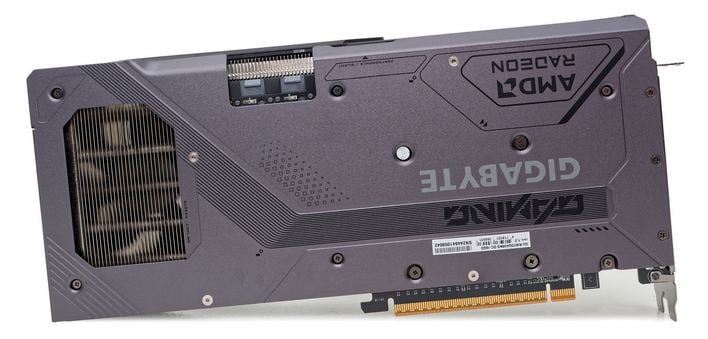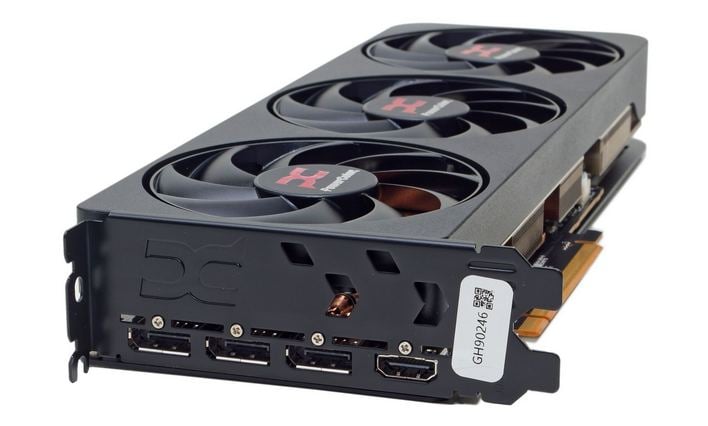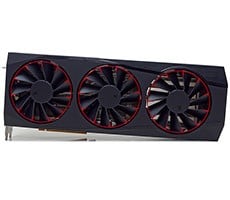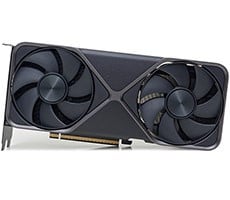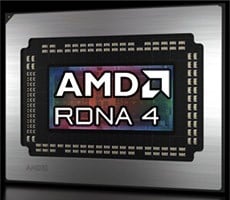AMD Radeon RX 9070 XT & 9070 Just Turned-Up The Heat On GeForce
| AMD RDNA 4 And Radeon RX 9070 Series: Radeon RX 9070 - $549, 9070 XT - $599 MSRP AMD's Radeon RX 9070 and 9070 XT target the high volume, mid-range PC gaming market, are priced aggressively, and take the fight to NVIDIA.
|
|||

|

|
||
Last week, AMD revealed all of the juicy details regarding its RDNA 4 consumer GPU architecture and the expected performance and suggested pricing of its Radeon RX 9070 series graphic cards. With NVIDIA’s first wave of desktop GeForce RTX 50 series launches mostly in the rearview mirror, gamers have been waiting with bated breath to see what AMD had in store. As such, AMD’s presentation last week seemed to get lots of folks excited, especially after seeing the top-end Radeon RX 9070 XT’s $599 MSRP. Of course, slick demos and a well-produced unveiling don’t mean much if the actual product doesn’t deliver. Thankfully, the wait is over, and we can finally show you what the Radeon RX 9070 and RX 9070 XT are all about. We’ve had a few cards in hand for a little while and have put them through a battery of tests, alongside an array of competitive offerings. So, without further delay, let’s get right to it...
AMD Radeon RX 9070 XT And 9070 Specifications
We have already covered the finer details of AMD’s RDNA 4 GPU architecture, its new features and updates coming with the latest Adrenalin Edition Radeon software, so we won’t rehash too much of that again here. Suffice it to say, if you want to understand what makes the new Radeon RX 9070 and RX 9070 XT tick, you should read this now.
To quickly summarize, AMD is claiming a significant generational performance uplift per Compute Unit with RDNA 4, for better rasterization, ray tracing, and machine learning performance. The Radeon RX 9070 series also features a new media engine for faster, higher-quality transcoding. AMD is introducing FSR 4 with ML-enhanced upscaling and acceleration on the Radeon RX 9070 series. And numerous AI-infused tools and apps are making their way into AMD’s Adrenalin Edition Radeon software, to not only enhance its quality, but give users the ability to more quickly and comprehensively report any issues.
Let's Check Out Some Radeon RX 9070 & 9070 XT Cards
We got our hands on an array of Radeon RX 9070 and 9070 XT cards in preparation for this article. XFX sent over its Quicksilver Magnetic Air Edition Radeon RX 9070 XT and white Quicksilver Gaming Edition Radeon RX 9070, and we also scored a PowerColor Reaper Radeon RX 9070 XT and Gigabyte Radeon RX 9070.In terms of their max boost clocks and memory configurations, all of the cards were similar. Game clocks should hover around the 2,400MHz mark, with boost clocks as high at 2,970MHz. And all of the cards are outfitted with 16GB of GDDR6 memory operating at an effective data rate of 20Gbps (connecter over a 256-bit interface) and dual 8-pin PCIe power connectors.
Where all of the cards differ is in terms of their designs and form factors.
The PowerColor Reaper Radeon RX 9070 XT is actually the smallest card of the bunch. Although it’s packing a triple-fan cooler, the card measures only 304mm x 127mm x 42mm and is only two-slots wide. The PowerColor Reaper’s physical dimensions are much more in-line with smaller, dual-slot cards of the past.
The Reaper is packing a 14-phase VRM (8+1+3+2) design with DrMOS power modules and IMON real-time digital. The cooler features triple 90mm and the underlying fin-stack is equipped with 5 x 6mm heat pipes to help wick heat away from the GPU and power circuitry. Honeywell PTM7950 thermal pads are also used were applicable, for better thermal conductivity and heat dissipation.
The Quicksilver Magnetic Air Edition Radeon RX 9070 XT goes in a completely different direction. This card is absolutely massive...
Underneath its massive cooling system, the Quicksilver Magnetic Air Edition Radeon RX 9070 XT has similar specs to the PowerColor Reaper, but as you'll see on the next few pages, the huge cooler keeps the GPU and memory operative at somewhat lower temps, which helps maintain higher game clocks in the real-world and slightly increase performance.
Both of the XFX cards you’ll see here measure in at 360mm x 150.5 x 70.2, and are 3.5 slots wide. As much as we love the idea of high-performance coolers on today’s GPU, which typically allow for slower RPM fans, and hence less noise, the increased girth of these cards relative to something like the PowerColor Reaper is stark. These XFX cards are some of the largest we’ve tested.
XFX is doing some interesting stuff, though. The XFX Quicksilver cards are packing all digital PWM, also feature 14-phase designs. And the coolers are outfitted with 5 x 6mm heat pipes and massive thin-fin heatsinks, with nickel plated copper cold plates. The Quicksilver Magnetic Air Edition Radeon RX 9070 XT also sports some really cool, easily removable fans.
As the “Magnetic Air” signifies, the fans are held in place magnetically and literally be pulled out with a slight tug for easy cleaning. We should also note that the glossy, angled wing pieces on the top and bottom of the Magnetic Air 9070 XT are removable as well, and XFX plans to release the 3D files for those parts so that enthusiasts can 3D print their own.
The white Quicksilver Gaming Edition Radeon RX 9070 has similar dimensions, but its fans are fixed in place. The massive cooler on the scaled down RX 9070, which has significantly lower power consumption, means this card operates particularly cool and quiet. If a Radeon RX 9070 is in your future, and you dig the large form factor and white colorway of this card, it will most assuredly keep temps in check. We saw GPU temps peak in the mid 50°C range on this card.
Similar to all of the other cards shown here, the Gigabyte Radeon RX 9070 also features a triple-fan cooler, with a very dense heatsink affixed to the GPU and memory. Its overall dimensions fall somewhere in between the PowerColor and XFX cards, though. It’s about .5” shorter than the Reaper, but thicker at 2.5 slots wide. The XFX cards dwarf the Gigabyte card, though.
Time constraints prevented us from completing a full suite of benchmark runs on this card, but it is in the test rig “as we speak” and performance is right in-line with the XFX Radeon RX 9070.
The outputs on all of these Radeons is also similar and consists of a trio of DisplayPorts (2.1b) and a single HDMI port (2.1b). And with that, what do you say we get to some benchmarks? We know that's what you've been waiting for...

